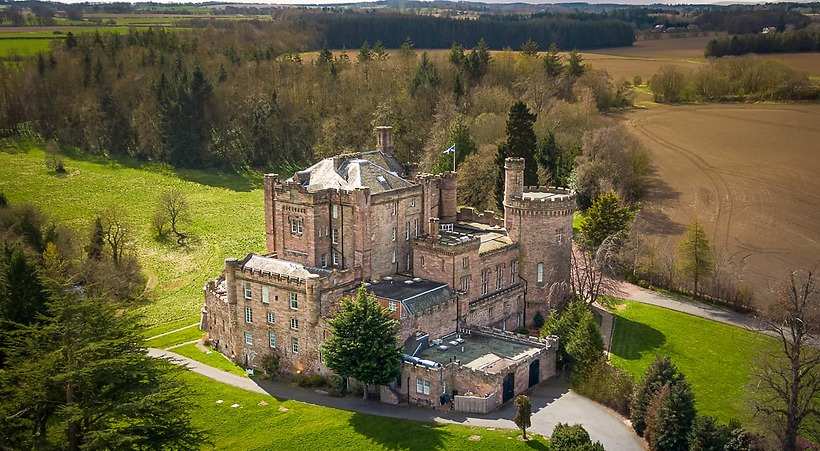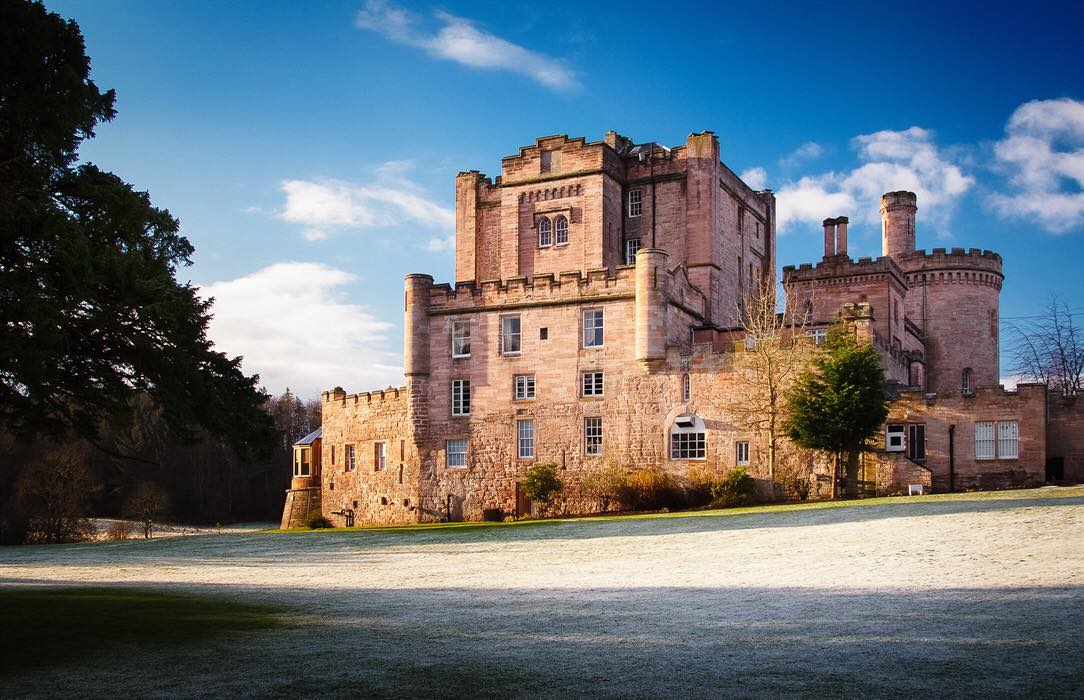Dalhousie Castle
Dalhousie Castle, a fortress of medieval grandeur, stands proudly near Edinburgh, Scotland. As one of Scotland’s oldest inhabited castles, it has been steeped in history, royal encounters, and tales of battles. Over the centuries, Dalhousie Castle has transformed from a feudal stronghold into a luxury hotel, retaining its unique architectural character and rich history. Today, it invites modern guests to experience the atmosphere of a bygone era. In this detailed exploration, you will uncover the castle’s history, its enchanting location, and its present-day status as a beloved destination for travelers worldwide.

Location of Dalhousie Castle
Dalhousie Castle is located in the village of Bonnyrigg, approximately eight miles southeast of Edinburgh, Scotland’s capital. Positioned along the picturesque River Esk, the castle occupies a scenic stretch of land known for its rolling landscapes, lush woodlands, and the tranquil flow of the river. This setting adds to its serene charm. The castle’s proximity to Edinburgh makes it accessible, providing visitors with the convenience of visiting nearby historical and cultural attractions while enjoying the countryside’s peaceful ambiance. The area surrounding the castle is equally historic. It sits within Midlothian, a region that holds some of Scotland’s most significant medieval landmarks.
The location of Dalhousie Castle is ideal for those wishing to explore the storied past of Scotland while remaining close to a vibrant city. The castle’s grounds are equally captivating, featuring a blend of manicured gardens, ancient trees, and hidden pathways that invite visitors to wander and absorb the essence of centuries-old Scottish heritage. The castle’s location has also afforded it strategic importance in its early years. This made it a formidable fortress against invaders.
History of Dalhousie Castle
Dalhousie Castle’s origins can be traced back to the 13th century, when it was built as the ancestral seat of the Ramsay family. This family maintained ownership of the property for over 700 years. The Ramsay clan, known for their loyalty to the Scottish crown, played a significant role in Scotland’s tumultuous medieval period. The castle served as a vital stronghold during various conflicts. Records show that Sir William Ramsay, one of the early owners, was a close ally of King Robert the Bruce. For this reason, the castle was likely fortified to withstand potential sieges during the Wars of Scottish Independence.
Throughout its history, Dalhousie Castle has seen numerous prominent visitors. These include King Edward I of England, who used it as a base during his campaigns against Scotland in the late 13th century. Despite English advances, the castle remained under Ramsay control. It endured several sieges but never fell into enemy hands. This resilience has made Dalhousie one of the most notable examples of Scottish defensive architecture from the medieval era.
By the 15th century, the castle underwent significant architectural modifications. These changes enhanced its defensive features while also beginning to adopt a more residential character. However, the military significance of the castle continued. In the 17th century, Dalhousie served as a garrison during the Covenanting Wars. Later, in 1825, the castle underwent a major renovation under the guidance of architect William Burn. Tudor and Gothic elements were incorporated, transforming Dalhousie into a more comfortable and elegant residence.
The Ramsay family maintained their residence at Dalhousie until 1914. After this, the castle was sold and repurposed several times. Its history as a family seat ended, but its reputation as an emblem of Scottish heritage endured. Today, it stands as a place where Scotland’s past is preserved and celebrated.

Current status
Today, Dalhousie Castle operates as a luxury hotel. It welcomes guests from all over the world to experience the charm and ambiance of this historic landmark. Since the 1980s, extensive renovations have been carried out to preserve the castle’s historical integrity while adapting it to modern needs. The current interior is designed to reflect the elegance of its past. This includes lavish furnishings, tapestries, and antique decorations that evoke the splendor of its previous life as a noble residence.
Guests are provided with a unique opportunity to stay within the ancient walls of a castle that has witnessed centuries of history. Each room has been carefully restored and furnished to create an immersive experience. This design allows visitors to feel as though they have stepped back in time. The castle’s Great Hall, with its grand staircase and decorative plasterwork, continues to captivate those who visit. The library, dining rooms, and even a dungeon have been transformed into spaces where guests can relax, dine, and revel in Dalhousie’s medieval ambiance.
Throughout the year, Dalhousie Castle remains a place where guests can not only stay. Visitors may also learn about its rich heritage through guided tours and historical exhibitions. The legacy of the Ramsay clan and their contributions to Scotland’s history are kept alive within the castle’s walls, offering a glimpse into the life of a noble family and their centuries-long influence on Scottish society.
Admission
Community features
Castle features
Video
Location
Official website
Featured listings














